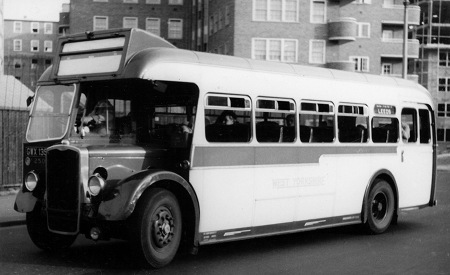
Photograph by “unknown” if you took this photo please go to the copyright page.
West Yorkshire Road Car Company
1949
Bristol L5G
ECW DP31R
This Sunday a very different coach than you have been used to, West Yorkshire coaches were painted in cream & red rather than red & cream as the photo shows. This photo was taken before West Yorkshire brought in their rather complicated fleet numbering system as there are no letters just numbers in this case 250, which seemed a good enough system for 90 odd percent of other operators, can not imagine why it wasn’t good enough for West Yorkshire.
Anyway in April 1954 this bus was renumbered from 250 to EG2 but then in January 1959 it was renumbered again to SG 152 obviously normal fleet numbering really would of been a better idea.
This bus was withdrawn from West Yorkshire in June 1961 and moved to Wales first with Turner of Cardiff until 1963 then to Bennet of Swansea then the trail goes cold. Unless you know, if you do, let me know, please leave a comment.
A full list including Bristol and West Yorkshire codes can be seen here.
I think there were operational reasons for the 1954 re-numbering system. For example, in York City, all the Gardner engines were 5LW, which were, to say the least, slow. (Extremely reliable, of course, but no fireballs!). There was therefore a policy of allocating the Gardner 7.0 litre five cylinder engined vehicles (YDG’s) to certain routes, and the Bristol 8.1 litre six cylinder engined vehicles (YDB’s) to others.
The regulators who allocated the vehicles every morning would thus know immediately which vehicles to allocate to which routes, fleet numbers just on their own would have required the regulators to have a prior knowledge of the fleet make- up. In practice, all regulators would quickly have become familiar with the fleet make-up, of course, but new guys on the job, or staff who did the job only occasionally, would have found the new system easier.
Similarly, allocating vehicles to some country routes with narrow roads was easier if you knew immediately the bus width, (e.g. DB or SB – 7ft 6in wide rather than DBW or SBW – 8 ft wide), without having to remember.
Roy Burke
Leave a Reply